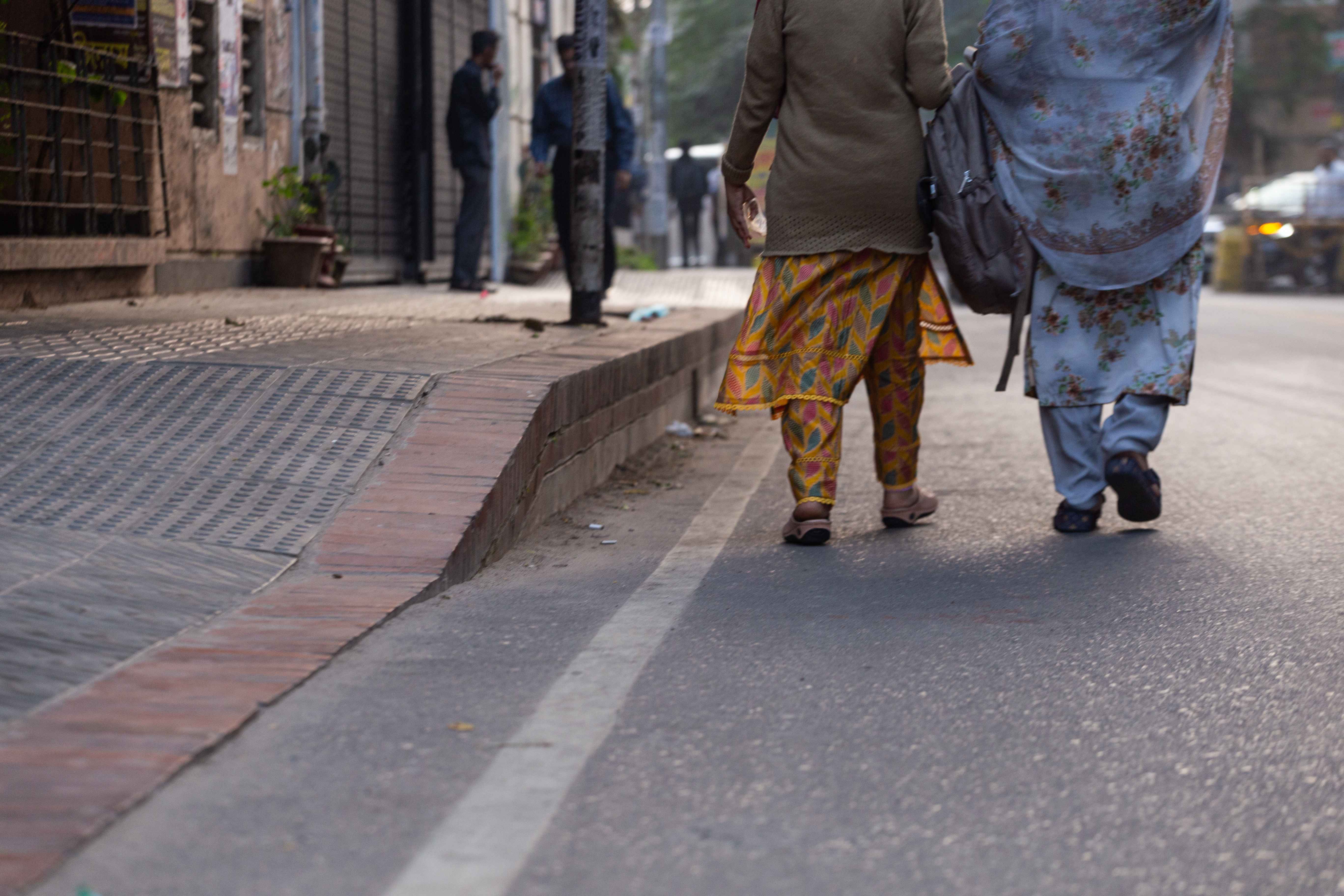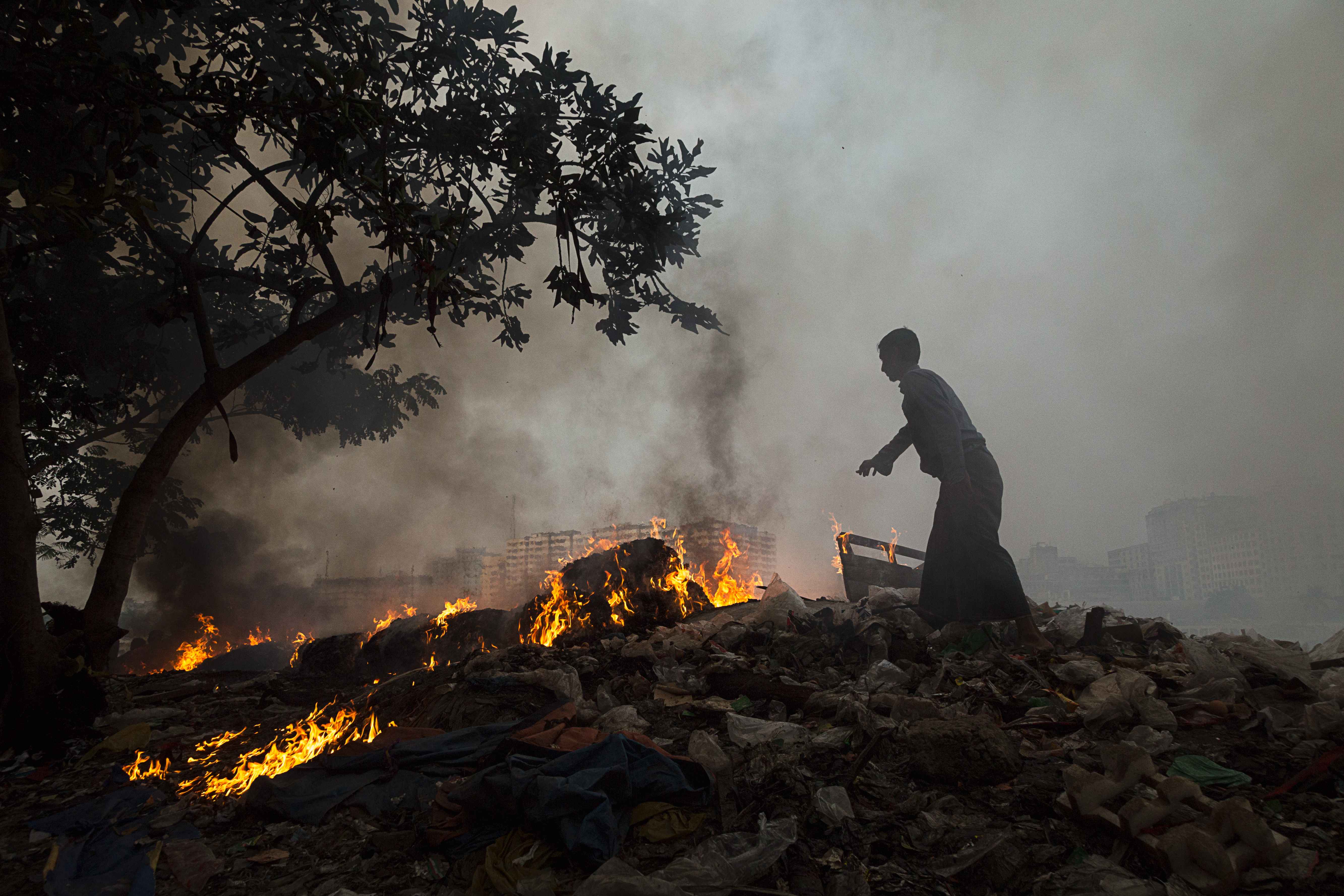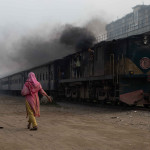
Home | blog
Dhaka’s Footpaths: A Battleground Between Survival and Mobility..
A Battleground Between Survival and Mobility
Published: 2024-05-25 | Updated: 2025-02-06
In Dhaka, footpaths are not merely pedestrian walkways; they are the frontlines of a daily battle between two equally urgent needs—survival and mobility. Lining nearly every major footpath are street vendors selling an astonishing variety of goods: fruits, snacks, tea, clothes, household items, mobile accessories, and more. For many city dwellers, especially from low- and middle-income households, these informal markets are essential. They offer affordable products at convenient locations, often just steps away from homes, offices, and bus stops. In a city where time, money, and access are always limited, these vendors play a vital economic and social role.
However, this same ecosystem that enables one group’s survival often comes at the cost of another’s basic right to safe, uninterrupted mobility. According to a report by the Dhaka Transport Coordination Authority (DTCA), approximately 60 percent of the city's footpaths are illegally occupied—a staggering figure that underscores the scale of the challenge. This congestion doesn't merely inconvenience pedestrians; it pushes them onto roads already choked with vehicles, creating a hazardous blend of foot traffic and motor traffic. The result? A sharp increase in road accidents, pedestrian fatalities, and a pervasive sense of chaos in the city’s public spaces.
The Human Face of Informality
Yet, it is important to understand that this is not simply a matter of law versus disorder, or right versus wrong. Rather, it is a deeply human story—rooted in structural poverty, economic exclusion, and urban inequality. Most street vendors are part of the informal economy, a vast sector that includes millions of Bangladeshis who lack formal employment and social security. These vendors are often migrants from rural areas, compelled to move to the city in search of livelihoods. Many of them are the sole earners in their families. For them, selling on the street is not a choice, but a necessity for survival in a city where formal jobs and affordable housing remain out of reach.
The Cost of Chaos
Meanwhile, pedestrians—especially women, children, the elderly, and persons with disabilities—pay a steep price for the unregulated sprawl of commercial activity on footpaths. Sidewalks that are supposed to ensure safety, accessibility, and dignity of movement instead become sites of discomfort, danger, and sometimes harassment. People are routinely forced to step onto the streets to bypass vendor stalls, increasing their exposure to reckless drivers and congested traffic. For someone pushing a stroller, using a wheelchair, or simply trying to walk with an elderly parent, Dhaka’s footpaths often feel like obstacle courses designed to exclude them.
In addition to the mobility crisis, the informal occupation of footpaths creates broader urban challenges. Poor sanitation, lack of waste management, and haphazard stalls turn otherwise vibrant public spaces into chaotic, unhygienic zones. Fire hazards from open flames used by food vendors, noise pollution, and blocked emergency exits near buildings are also common. Furthermore, these uncontrolled markets often compromise the aesthetic character and cultural identity of Dhaka’s neighbourhoods—many of which are rich in architectural and historical significance.
A Call for Inclusive Urban Planning
This is not to argue for mass eviction or harsh crackdowns on street vendors. Such measures have historically failed, only pushing the problem elsewhere or triggering violent clashes. Instead, the situation demands an inclusive, equitable, and humane approach to urban planning. Many cities around the world—such as Bangkok, Bogotá, and Nairobi—have experimented with innovative solutions that balance the needs of pedestrians and informal vendors. These include designated vending zones, time-based usage rights for footpaths, vendor licensing systems, improved waste management, and micro-infrastructure such as modular stalls, waste bins, and clean water access points.
Moreover, pedestrian zones can be revitalised through thoughtful design. Wider sidewalks, better lighting, accessible ramps, and protective barriers between roads and footpaths can make walking safer and more attractive. In areas with high commercial activity, hybrid public spaces can be designed to accommodate both vendors and walkers, without pitting them against each other.
The Footpath as a Moral Barometer
The state of a city’s footpaths tells us more than we think. It reflects our values as a society—who we prioritise, whose rights we protect, and whose struggles we overlook. In Dhaka, the battle over footpaths is not just about urban planning; it is about the kind of city we want to become. Do we envision a city where public space belongs only to the economically privileged and the physically able? Or can we imagine a more inclusive urban future—one that treats footpaths not as contested turf, but as common ground for dignity, movement, and survival?
Until we answer this, the footpaths of Dhaka will remain both a lifeline and a landmine—crowded, chaotic, contested, and tragically symbolic of the city’s unfinished journey toward equitable urban life.





